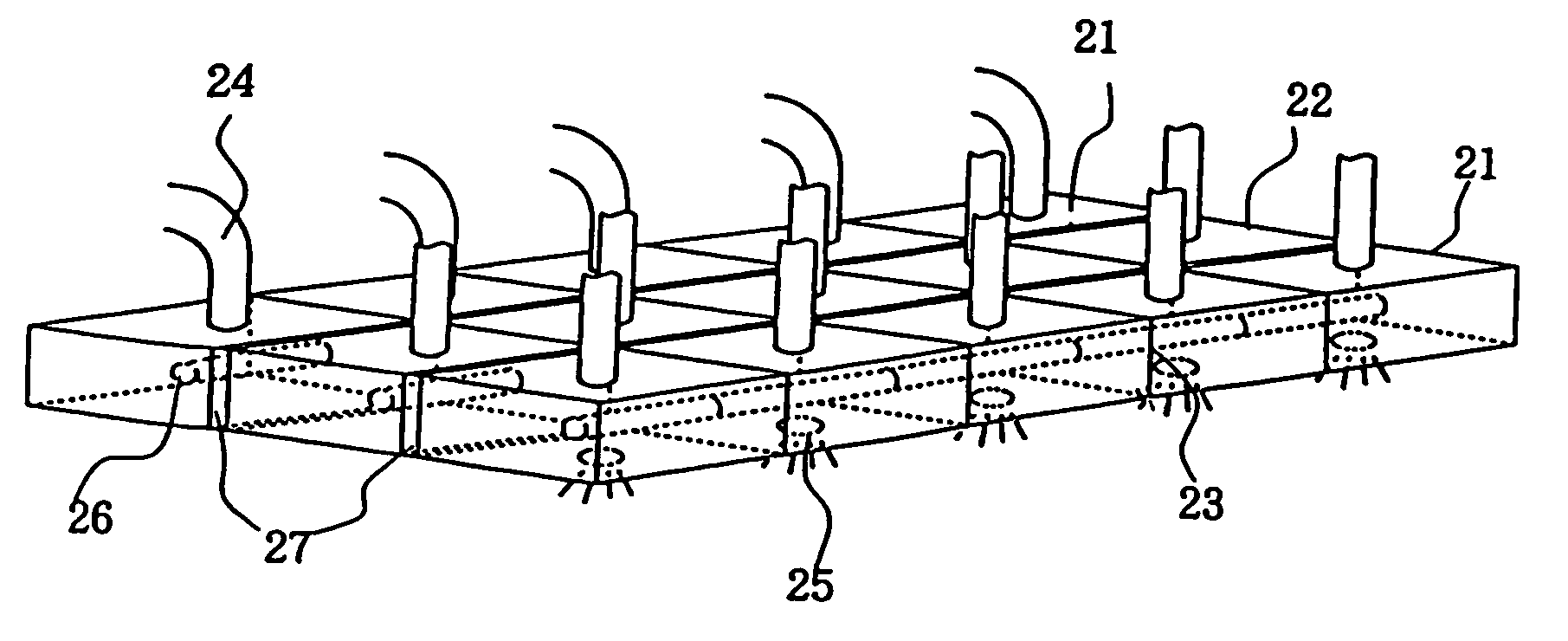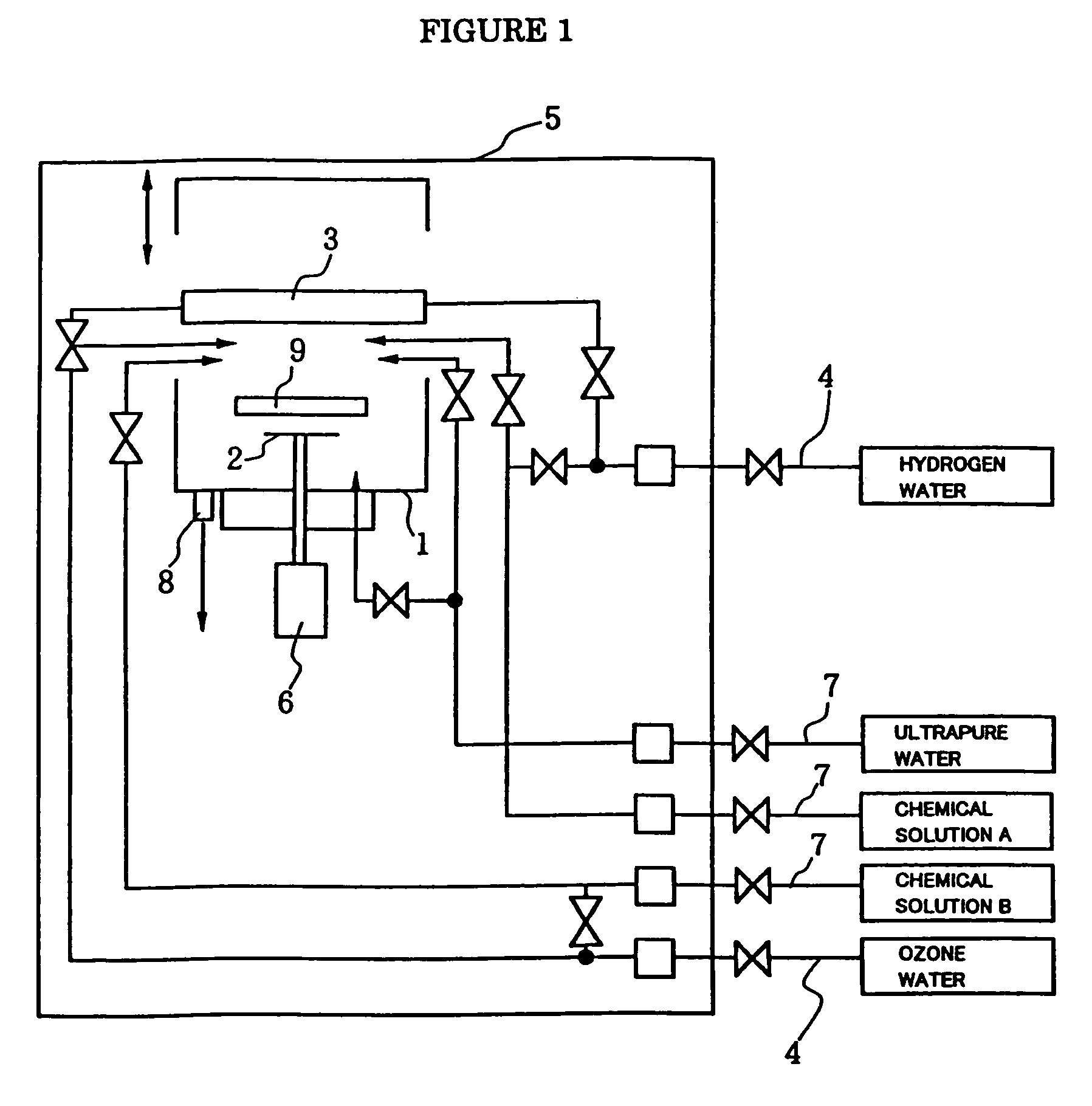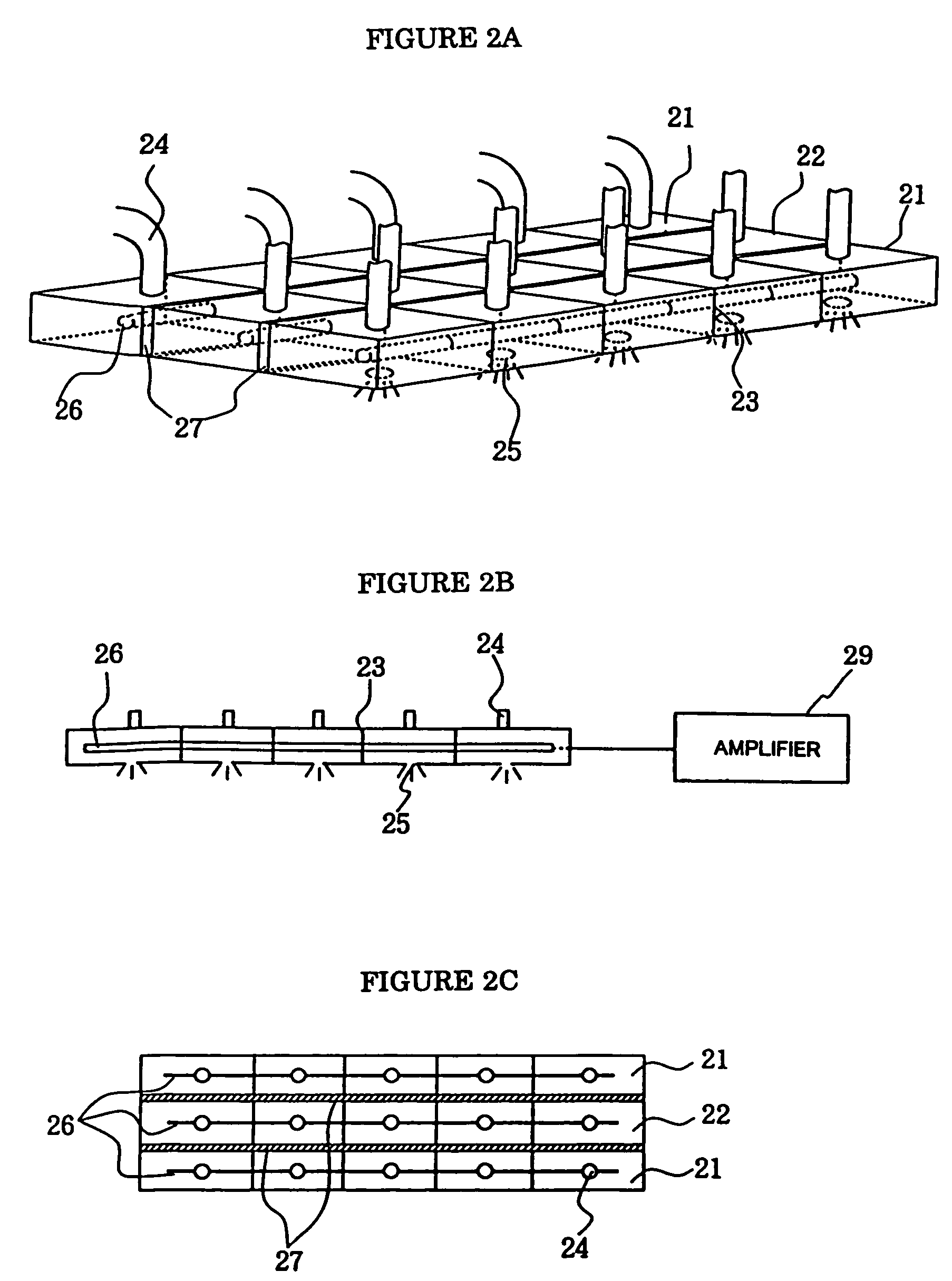Substrate treatment process and apparatus
a technology of substrate and treatment process, applied in the direction of lighting and heating apparatus, chemistry apparatus and processes, cleaning using liquids, etc., can solve the problems of damage spreading from such surface roughening, damage to the pattern, and damage to the surface, so as to minimize the reduction of electrical characteristics of the device, no substantial pollutant load on the environment nor damage to the pattern. , the effect of improving production yield
- Summary
- Abstract
- Description
- Claims
- Application Information
AI Technical Summary
Benefits of technology
Problems solved by technology
Method used
Image
Examples
example 1
Striping Treatment of Resist with Ozone Water
[0071]The ozone water for treating each sample was ejected from the nozzle unit shown in FIGS. 2A–2C. Treatment conditions for that treatment step are shown in Table 3. In addition, the thickness values of the resist film before and after the treatment are also shown. The ejection rate of ozone water at that time was 10 mL / min per cm2 of substrate area. Through the outlets other than the outlets for the ozone water, ultrapure water which had been heated to 50° C. by a quartz heater was ejected onto each substrate. Over the ultrapure water, ozone water was ejected at the same ejection rate as that described above.
[0072]
TABLE 3Conditions for Resist Stripping with Ozone Water (60 ppm),and Results of StrippingSampleABCTreatment solutionOzone waterOzone waterOzone waterOzone concentration 60 ppm 60 ppm 60 ppmTreatment time 12 min 15 min 10 minTreatment temperature 50° C. 50° C. 50° C.Rotational speed1500 rpm1500 rpm1500 rpmResist film thick...
example 2
Resist Stripping Treatment by SPM Treatment
[0077]SPM treatment for the treatment of each sample was conducted in a conventional chemical bath cleaning equipment. Treatment conditions for that treatment step are presented in Table 6. The thickness values of each resist film before and after the treatment are also shown.
[0078]
TABLE 6Conditions for Resist Stripping by SPM, and Results of StrippingSampleABCTreatment solutionSPMSPMSPMMixing ratio (volume4:14:14:1ratio)(sulfuric acid:hydrogen peroxide)Treatment time7 min7 min5 minTreatment temperature100° C.100° C.100° C.Resist film thickness7000 Å7000 Å7000 Å(before treatment)Resist film thicknessStrippedStrippedStripped(after treatment)completelycompletelycompletely
[0079]After the stripping of the resist, each substrate was observed under the microscope equipped with the laser beam source. No resist film was observed to be remaining on the surface of the substrate. Fine particles remaining on the substrate shortly after the stripping of...
example 3
Resist Stripping Treatment by SPM Treatment
[0084]SPM treatment for the treatment of each sample was conducted in the conventional chemical bath cleaning equipment. Treatment conditions for that treatment step are presented in Table 9. The thickness values of the resist film before and after the treatment are also shown.
[0085]
TABLE 9Conditions for Resist Stripping by SPM, and Results of StrippingSampleABCTreatment solutionSPMSPMSPMMixing ratio (volume4:14:14:1ratio)(sulfuric acid:hydrogen peroxide)Treatment time10 min13 min13 minTreatment temperature100° C.125° C.125° C.Resist film thickness7000 Å7000 Å7000 Å(before treatment)Resist film thicknessStrippedStrippedStripped(after treatment)completelycompletelycompletely
[0086]After the stripping of the resist, the substrates were observed under the microscope equipped with the laser beam source. Practically no fine particles were observed on the surface of each substrate, but some of the samples were observed to carry a great number of f...
PUM
| Property | Measurement | Unit |
|---|---|---|
| frequency | aaaaa | aaaaa |
| frequency | aaaaa | aaaaa |
| temperature | aaaaa | aaaaa |
Abstract
Description
Claims
Application Information
 Login to View More
Login to View More - R&D
- Intellectual Property
- Life Sciences
- Materials
- Tech Scout
- Unparalleled Data Quality
- Higher Quality Content
- 60% Fewer Hallucinations
Browse by: Latest US Patents, China's latest patents, Technical Efficacy Thesaurus, Application Domain, Technology Topic, Popular Technical Reports.
© 2025 PatSnap. All rights reserved.Legal|Privacy policy|Modern Slavery Act Transparency Statement|Sitemap|About US| Contact US: help@patsnap.com



